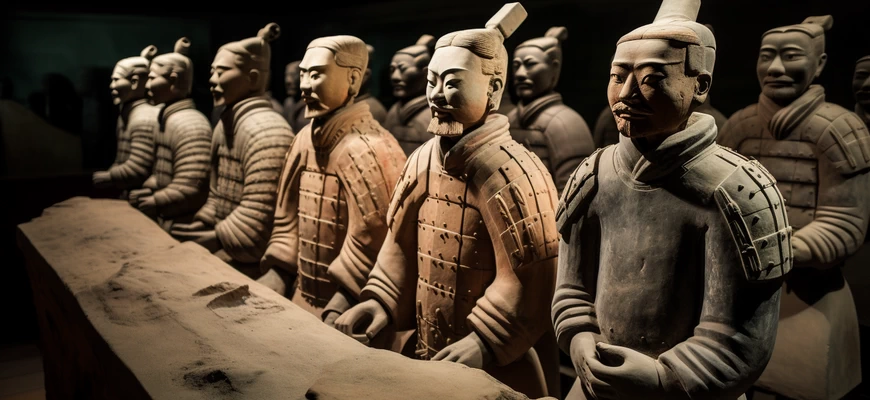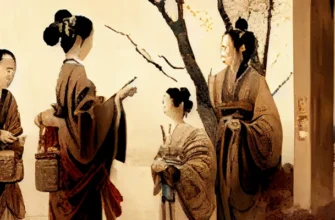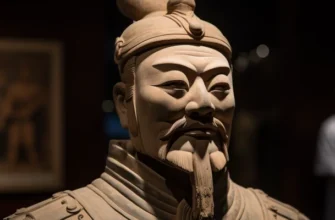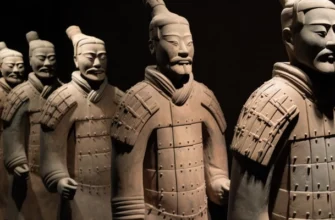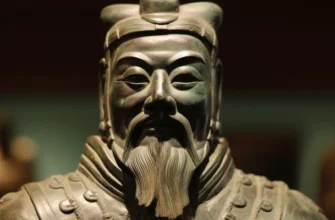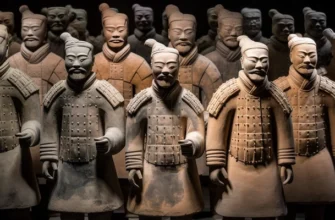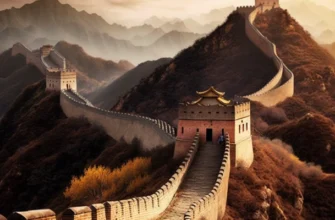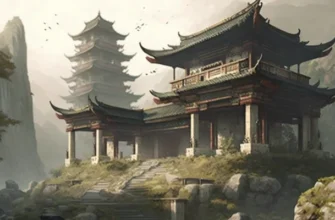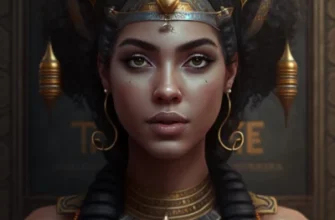Ancient Chinese culture developed over many stages spanning decades of history. At the beginning of the Neolithic era, China saw the first cultural achievements, such as ceramics and stone decoration. During the ancient warrior period, Chinese civilization developed, and religious and philosophical teachings emerged. During the dynastic period, Chinese culture reached its peak, particularly in art, literature, and music. In the Middle Ages, the culture declined, but preserved its traditions. In modern times, Chinese culture has been influenced by Western culture and science, and has developed its own popular culture. Today, Chinese culture has a significant influence on world culture and continues to evolve and adapt to modernity.
- The Neolithic Age
- The first cultural achievements
- The development of ceramics and stone decoration
- The Ancient Warrior Period
- Formation of Chinese civilization
- Development of religion and philosophy
- Dynastic times
- The rise of imperial China
- The influence of Confucianism on culture and society
- The Middle Ages
- Relative decline of culture
- Preservation of traditional arts and crafts
- Modern times
- The influence of Western culture and science
- Conclusions
The Neolithic Age
The Neolithic era in the history of ancient China began about 10,000 years ago. During this time, there were significant changes in the cultural and technological development of this civilization. At the beginning of the Neolithic period, the first settlements and cultural centers appeared, which became the basis for the further development of Chinese culture. The main achievements of that time were ceramics, stone processing, tool making, agricultural development, and the emergence of the initial form of writing. Religious and mythological ideas played a significant role in this stage of cultural development of ancient China, influencing the formation of the Chinese worldview. The Neolithic era was the first step in the formation of the multifaceted and multilayered culture of ancient China.
The first cultural achievements
The Neolithic era of ancient China saw the emergence of the first cultural achievements that played an important role in shaping Chinese civilization. In particular, early forms of ceramics and stone jewelry appear from this time, which indicates a high level of craftsmanship and art at that time. The first settlements that later grew into cities, such as Yanshao and Banpo, also appeared. The development of agriculture ensured the continued life and development of the population. Advances in technology were also an important element in the development of this era, including the manufacture of stone and bone tools. Religious beliefs also played a significant role in shaping the culture of ancient China, which were manifested in religious objects and rituals. In general, the emergence of the first cultural achievements in the Neolithic era was an important stage in the formation and development of Chinese culture.
The development of ceramics and stone decoration
The Neolithic period of Ancient China saw the development of ceramics and stone decoration, which became an important element of the cultural development of that time. Ceramic products of the Neolithic era are represented by clay vessels of various shapes and purposes, from edible vessels to vessels for household needs. The first stone products, such as knives, axes, arrows, and other tools, also appeared at this time. Stone products were also used to decorate vessels and create jewelry. The magnificent decoration of stone knives and axes indicates that the craft had already reached a high level of skill. The development of ceramics and stone decoration was an important stage in the formation of the cultural heritage of ancient China.
The Ancient Warrior Period
The Ancient Warring States period (2070 to 1600 BC) is an important stage in the history of ancient China. During this period, the first state formations were formed, including the Yixing Dynasty, which became the first empire in China. The cultural and historical achievements of this period include the development of bronze products such as weapons, tools, and ceremonial objects. In addition, a written language was created during this period, which was an important step in the development of culture and statehood. Art and architecture, including pagodas and memorials, were also developed during the Old Warrior period. The Ancient Warrior Period was the first stage in the formation of China’s cultural and historical heritage.
Formation of Chinese civilization
The Ancient Warrior Period (2070-1600 BC) is a key stage in the formation of Chinese civilization in ancient China. During this period, the first state formations were created, including the Yixing Dynasty, which became the first empire in China. The cultural achievements of this period include the development of ceramics, bronze products, writing, architecture, and art. The Ancient Warring States period saw the formation of the basic principles of Chinese philosophy, including Confucianism and Taoism. This period is an important stage in the history of Chinese civilization, as it became the basis for the further development of Chinese culture and history.
Development of religion and philosophy
The Ancient Warring States period of ancient China (2070-1600 BC) saw the development of religion and philosophy, which became an important component of the culture of that time. In particular, Confucian philosophy was born here, based on the idea of moral behavior and harmonious relations between people. Also at this time, Taoism was created, the main principle of which was to observe natural laws and harmony with the world around us. An important role in ancient Chinese religion was played by the cult of ancestors, who believed that they provided people with the necessary protection and a happy life. Religious and philosophical doctrines formed in the Ancient Warrior period had a great influence on the further development of Chinese culture and history.
Dynastic times
The Dynastic Period of Ancient China (1600 BC – 221 AD) was a defining period in the formation of Chinese culture and history. This period includes a number of dynasties, such as Shang, Qing, Han, and others, each of which contributed to the development of China’s culture, politics, and economy. During this period, art, literature, architecture, music and other aspects of culture developed and played an important role in shaping Chinese civilization. This period is also known for significant events, such as the Unification of China under Qin Shi Huang and the construction of the Great Wall during the Ming Dynasty.
The rise of imperial China
The dynasties of ancient China (1600 BC – 221 AD) were the heyday of imperial China. This period is known for great achievements in science, technology, and culture. The period saw the development of character-based writing, significant work in astronomy and mathematics, and the creation of huge buildings and structures such as the Forbidden City in Beijing. The dynasties are also known for significant political and social changes, including the establishment of imperial power, the preservation and development of traditions, and the creation of new social classes. This period ended with the decline of the Han Dynasty and the subsequent formation of the Chinese Empire.
The influence of Confucianism on culture and society
Confucianism, a philosophy created by Confucius in the 5th century BC, had a significant impact on the culture and society of the dynasties of ancient China. It emphasized the importance of morality, human relationships, and regulated the actions of rulers and subjects, in particular, promoting the idea of a “golden mean” when a person should adhere to a reasonable middle ground between different extremes. Confucianism also influenced upbringing and education, promoting the importance of studying history and the classics, as well as the development of art and literature. His influence on the culture and society of ancient China remained for a long time, and his influence can be seen in China to this day.
The Middle Ages
The Middle Ages of Ancient China were the period from 220 BC to 960 AD. It was witnessed by a number of dynasties, such as Han, Tang, Song, and others. This period was characterized by significant development of science, technology, literature, art and culture in general. Among the important achievements were the creation of printing, the development of philosophy, religion, and medicine, the construction of canals and roads, the development of agriculture and trade, and the spread of Chinese culture to neighboring nations.
Relative decline of culture
Although the Middle Ages, as a term, is applied mainly to Western history, some researchers believe that in China, a period corresponding to the Western Middle Ages can also be distinguished, which lasted about 500 years, from the 6th to the 11th century AD.
During this period, it was quite difficult in China, and historians note a decline in intellectual and cultural activity. However, it cannot be argued that the entire Middle Ages of China was a period of cultural decline, as there were many cultural and intellectual achievements.
During this period, several innovations were launched, such as the use of paper as money, the development of book printing, the expansion of trade, and the increase in foreign trade with distant countries.
However, compared to the previous and subsequent periods, the Middle Ages in China can be considered a period of cultural decline, intellectual achievements, and social change.
Preservation of traditional arts and crafts
The Middle Ages of Ancient China were a period of development for many traditional arts and crafts that were preserved and developed over the centuries. One of the most famous crafts of the time was ceramics, which was made with great skill and used in everyday life as well as in temple architecture. Other crafts such as blacksmithing, pottery, and weaving were also popular.
Chinese art of the Middle Ages was very developed and included many different kinds of arts. The most famous arts included calligraphy, painting, sculpture, and woodcarving. These arts were connected to the traditions, philosophy, and religion of China at the time.
The preservation of the traditional arts and crafts of the Middle Ages of ancient China was ensured by the fact that Chinese culture was of great value to the people of that time. Many of these arts were passed down from generation to generation, and were carefully researched and studied.
The effects of the cultural decline of the Middle Ages were felt in later years, but many of the traditional arts and crafts were preserved and developed over the following centuries. Today, these arts and crafts still play an important role in the cultural life of China and are protected and preserved.
Modern times
The “Modern Period” is a period of Chinese history that encompasses the last few centuries of the Ming Dynasty, the Hintao Revolution, and the founding of the People’s Republic of China.
The Ming Dynasty (1368-1644) was the last dynasty of the Middle Ages of ancient China. During this period, China was one of the largest and richest countries in the world, with considerable power and influence. Many impressive architectural structures were built during this period, such as the Forbidden City, which has become a symbol of China.
The Ming Dynasty was followed by the Hintao Revolution (1911-1949), during which China became a republic and rejected the traditional monarchy. This period was difficult, with numerous conflicts and wars, but it gave impetus to the development of culture and education.
In 1949, the People’s Republic of China was founded, which succeeded the republican system. Under the leadership of the Communist Party of China, China has undergone major changes in its economy, politics, and culture. During this period, a massive national culture campaign was launched to revive traditional Chinese culture and build a new socialist culture.
The modern times of Ancient China were difficult, but they contributed to the development and change of Chinese culture, the preservation of values and traditions, and the creation of new forms of art and cultural life.
After the introduction of the reform and opening-up policy in 1978, China became a world leader in economy and innovation, and continued to develop culture and art. Today, Chinese culture occupies an important place in world culture.
In particular, the preservation of traditional arts and crafts continues in China to this day. For example, the arts of calligraphy and painting, paper-cutting, ceramics, and other crafts and arts continue to be respected and highly valued in China and abroad. In addition, new art forms, such as film and music, have emerged and are developing at an exciting rate and resonating with Chinese youth and the global community.
Consequently, China is making efforts to preserve traditional culture and art, as well as to create new forms of art and cultural life. In the modern world, Chinese culture occupies an important place and has a significant impact on world culture and art.
The influence of Western culture and science
The influence of Western culture and science on the modern times of ancient China was quite significant. Already in the nineteenth century, the Chinese Empire became the target of foreign expansion by European powers, which began to open trade routes with China and interfere in its internal affairs.
This led to the Chinese society getting acquainted with Western culture and sciences. In the XX century, after difficult historical periods such as the Cultural Revolution, China began to actively cooperate with the Western world, which gave impetus to the development of science, technology and culture in China.
For example, science and technology from Europe and the United States helped China develop its space fleet, develop a fast rail network, improve healthcare, and improve its education system. Western culture has also become popular among young people and forced the Chinese to rethink their traditions and values.
However, along with the acceptance of Western culture and sciences, questions have also arisen about the preservation and revival of traditional Chinese values and culture. This has led to the fact that Chinese society has begun to actively support the preservation of traditional arts and crafts, including calligraphy, painting, ceramics, and other art forms.
Another important aspect of the influence of Western culture on ancient China is the change in lifestyles and attitudes toward social issues. In particular, elements of the Western lifestyle began to appear in Chinese society, including driving cars, eating Western food and clothing.
However, this influence was not directly accepted by Chinese intellectuals and nationalists. They began to support the idea of reviving traditional Chinese culture and art, which is an important part of national identity.
In the second half of the 20th century, Chinese society experienced a period of political turbulence, but at the same time, the popularity of traditional Chinese culture grew. This led to the fact that Chinese society began to support the flourishing of traditional arts, such as opera, theater, dance, and other forms of art.
Thus, the influence of Western culture and science on the modern period of ancient China was complex and multifaceted. On the one hand, it contributed to the development of science, technology, and culture, and on the other hand, it posed important challenges to Chinese society in preserving traditional Chinese culture and art.
Conclusions
The overall influence of Chinese culture on the world is great and has a long history. Chinese culture has been the source of many inventions and discoveries that have been of great importance to humanity. Its influence on architecture, art, literature, philosophy, and other areas of human activity is remarkable.
In modern times, Chinese culture continues to occupy an important place in world culture. China has become one of the largest economies in the world and plays a leading role in global politics. Also, Chinese culture is becoming more and more accessible to foreign tourists, which contributes to the popularization of its traditions, art and cultural values.
On the other hand, Chinese culture has undergone significant changes and challenges in recent decades. The expansion of globalization and the influence of Western culture have led to a change in lifestyles and attitudes toward traditional Chinese values. However, many of these values continue to be important to the Chinese and are preserved in various forms of traditional art, culture, and crafts.
Overall, Chinese culture continues to evolve and make important contributions to world culture. Its rich traditions and cultural values continue to influence the development of mankind and arouse the interest and admiration of people from all over the world.
